Question ID: 1000-5715-1-5-6-9
Recipe Description
You'll need to make sure you have the following things:
lots of countertop or table space
paper stencils-- you'll print these out in the next step
metal cookie sheets—try to get ones that won’t warp in the oven
parchment paper
countertop mixer with dough attachment and whisk attachment
rubber/silicone spatulas
frosting bags and tips, or ziplock bags
candy thermometer (optional)
masking tape (optional)
paring knife
frosting knife or table knife
scissors
large cereal box or other light cardboard
pen/pencil
measuring cups and spoons
rolling pin
large metal mixing bowl, other bowls
plastic wrap
spatula
cooling racks
hot mitts
large shallow pan
whisk
water
1 blue gumdrop or jellybean
toothpick
heavy items to prop up drying pieces (e.g. canned food or books)Check recipes if you're not sure you have enough of these items:
eggs
pasturized egg whites (optional)
powdered sugar
gel food colors
light brown sugar
unsulfured dark molasses
nonstick spray or oil
all purpose flour
baking powder
salt
ground ginger, cinnamon, and cloves
milk
vegetable shortening (Crisco)
Print out the templates found in this pdf. For reference, the front elevation and plan view have been included. Trace the paper templates onto light cardboard and cut them out. I used a large cereal box. Remember to label the cardboard pieces so you don't confuse them.
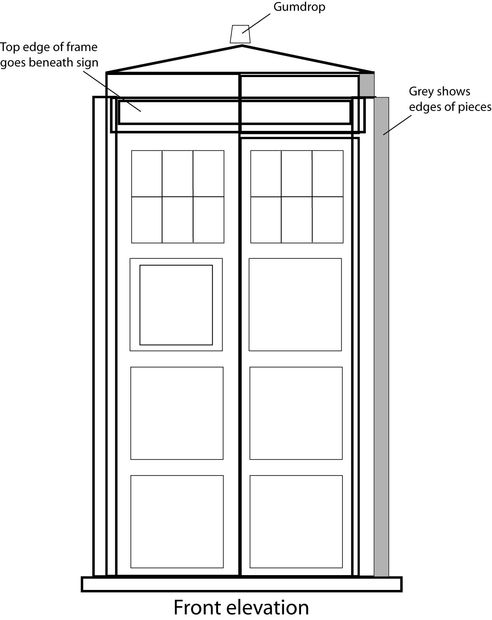
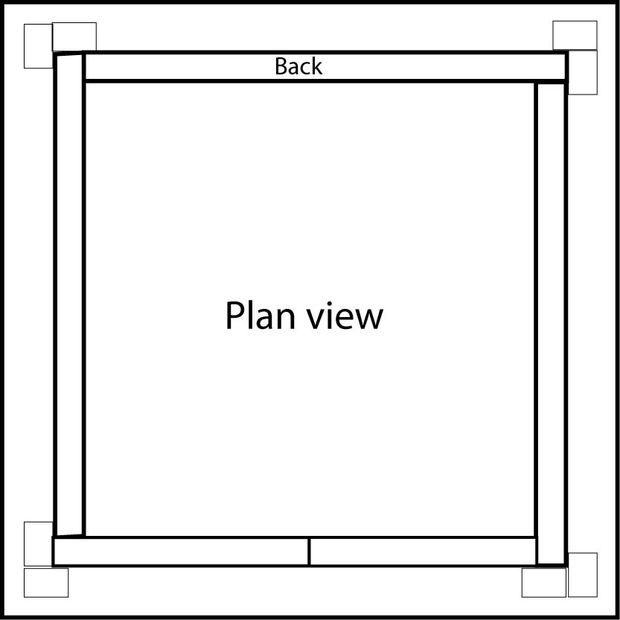
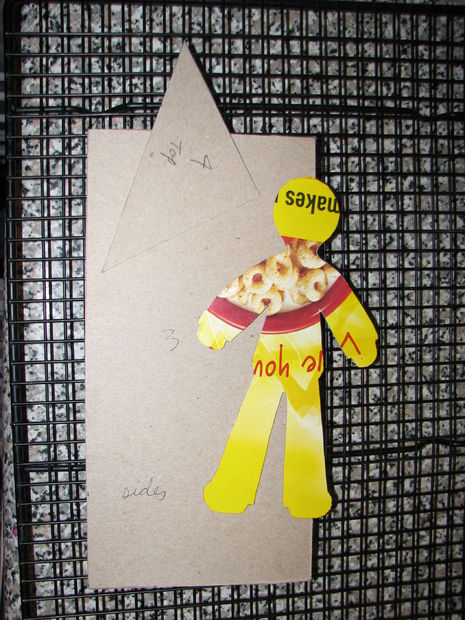
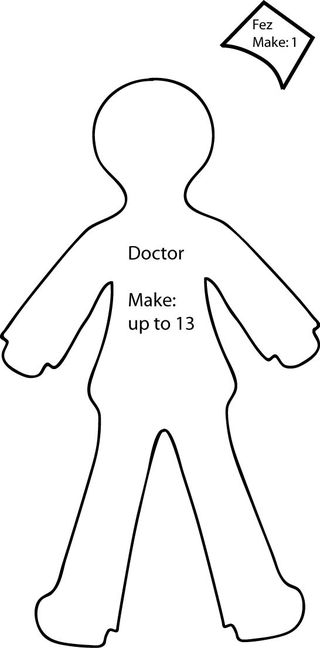
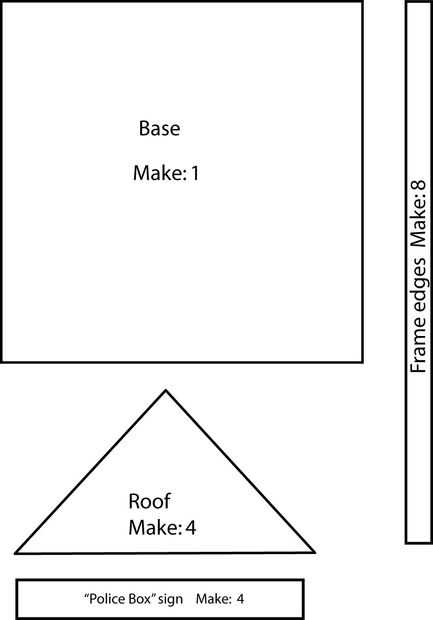







This recipe worked well for me, but feel free to use your own if you prefer.
¾ cup unsalted butter
1 ½ cup light brown sugar, lightly packed
1 cup unsulfured dark molasses
nonstick spray or oil
2 eggs
1 tablespoon water dry ingredients:
5 ½ cups all purpose flour
½ teaspoon baking powder
4 teaspoons ground ginger
3 teaspoons ground cloves
2 teaspoons ground cinnamon
½ teaspoon salt
Stir together the dry ingredients in a separate bowl and set aside. Cream the butter in a countertop mixer with a dough attachment. (You can do this recipe by hand, but only if you’ve got plenty of upper body strength. A handheld mixer will not be strong enough.) Beat in the brown sugar and eggs. Coat the inside of a measuring cup with nonstick spray or a little oil, then measure out the molasses and add it to the mixing bowl. The oil prevents the molasses from sticking excessively to the measuring cup. Add the water to the mixing bowl and beat. Gradually beat in the dry ingredients, stopping the mixer occasionally to scrape down the sides. The dough should be very stiff, almost like Play-doh. If it is still too soft and sticky, add another half cup of flour.
Divide the gingerbread dough into 3 flattish patties, wrap them in plastic wrap, and refrigerate for at least an hour (up to two days).
Preheat oven to 350 degrees and prepare cookie sheets lined with parchment paper. Roll out ¼ inch thick on parchment paper or a pastry mat, dusting with flour as necessary to avoid sticking. A quarter inch is thicker than you might normally roll cookies, so use a ruler to check. Lay templates on dough and cut out with paring knife. Make sure to cut out the right number of copies of each piece.
Unstick the pieces by sliding the paring knife underneath them. Use a spatula to transfer the pieces to the cookie sheets with a minimum of distortion. It is a good idea to segregate small pieces on different cookie sheets than large ones, because of the difference in baking times. Once the pieces are on the cookie sheets, lay the templates back on top of them to check that they are still the right shape and size. Use any remaining dough to make anything you like—gingerbread Daleks, K-9, or whatever.
Place cookie sheets in preheated oven. Do not overload the oven with more than 2 cookie sheets, because this will cause uneven heating. Watch the pieces through the oven door. Cooking time varies widely from the small pieces to the large ones. Small pieces are done in as little as 6 minutes, while large pieces could take 20 minutes or more. Pieces are done when their edges and corners start to darken. Don’t overcook—you can always put an undercooked piece back in if you have to.
With the pieces still on the warm cookie sheets, place the templates back on top of them one last time. Trim the warm gingerbread as needed—once it cools, it will be too brittle. Once the pieces are solid enough, transfer them to a rack to finish cooling.
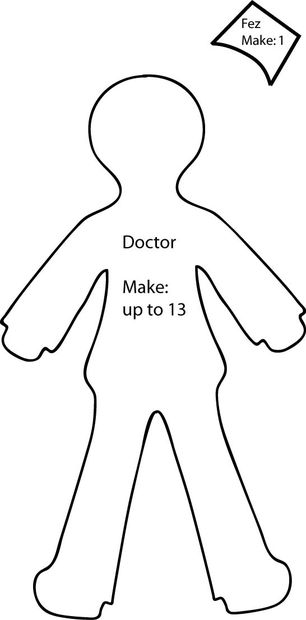
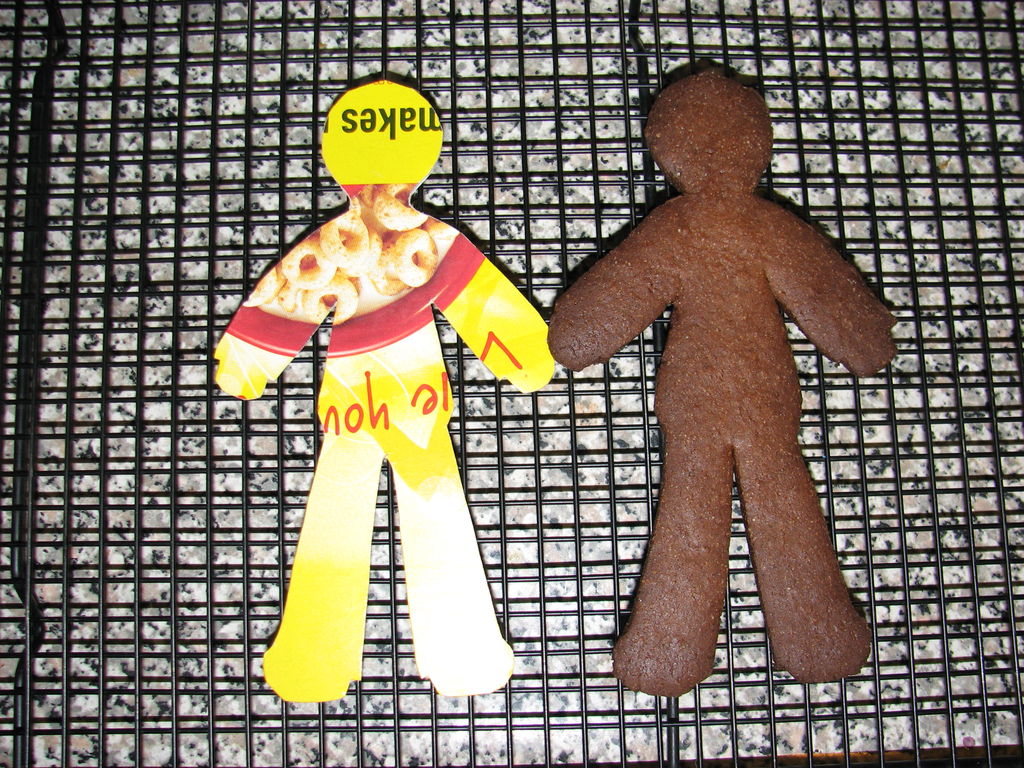


Recipe:
4 egg whites (Use 8 tablespoons of pasturized egg white product if you’re worried about salmonella)
5 1/3 cups powdered sugar
gel food colors
Note: There is a small, but measurable, risk inherent in using raw egg whites if you plan to eat your Tardis. This risk is greater for young children, pregnant women, people with compromised immune systems, and the elderly. Even clean, unbroken eggs can be contaminated inside. If you’re worried, you can buy pasturized egg whites in a carton, though these may not foam as well.
Fill the large, shallow pan with 1-3 inches of water and put it on the stovetop on medium heat. Clean the metal mixing bowl so that there is no grease, oil, or fat inside. Put the egg whites in the metal mixing bowl, and put it in the pan of water as a double boiler. Whisk the egg whites constantly for several minutes until they are warm to the touch (if you’re using a candy thermometer, 120-130 degrees Fahrenheit, no more). Remove the bowl from the heat, put it immediately into the mixer with the whisk attachment. Starting out slow, build up to high speed. Beat until whites form stiff peaks (when you pull the beaters out, the whites form sharp, somewhat droopy points like a Tim Burton landscape). Gradually beat in the sugar.
Reserve about a quarter of the icing in a sealed container. Dye the rest dark blue with the gel coloring and put it in an icing bag with a piping tip, or in a ziplock bag with the corner cut off. Once this frosting dries, it is like plaster, but it is soluble in warm water.
Assemble your Tardis in a place where you can leave the pieces without fear that they will be disturbed by unauthorized personnel or pets. As I was making this project, the gingerbread Doctor had to regenerate twice, having twice suffered a horrible fate at the jaws of ravenous dogs. (On the plus side, eating gingerbread seems to improve a dog’s breath.)
Gather some heavy items—like cookbooks or canned goods-- to prop up pieces while they set. You can also use masking tape to help hold pieces until they set. Look carefully at the plan view diagram to see how to join the pieces, or the Tardis won’t be square. If you’ve broken any pieces, glue them back together with icing.
Assembly order:
1. back+1 side, roof pieces to each other
2. other side
3. base
4. roof
5. front left
6. top right
7. front right door (I left it slightly open)
8. frame edges
9. signs
Glue the back to one of the sides first using the blue icing. Pipe a line along the edge and another line inside the angle of the join, like caulk. Don’t worry too much if icing shows on the outside; that’s why we dyed it blue. Prop the pieces up and leave them to set for at least an hour. While you’re waiting, you can start on assembling the roof and decorating the Doctor. I used masking tape and a pop bottle lid to hold the roof pieces at an angle while they set.
Once the back and first side have set, add the second side and leave it to set again. These first few pieces will need the longest setting time. After these, the Tardis will have a little more stability and you can get away with working faster. If something is misplaced, it’s better to find out before the glue has set all the way (3 hours, give or take).
Next, glue the back and sides onto the base and glue the roof on. Stick the front left panel in place, making sure that there is space for the last pieces to fit in. Stick on the upper right panel, over the door opening. Put the door in at the angle you choose. Stick the upright frame edges in place (consult the plan diagram) and stick the top frame edges in place like lintels. Allow to set and stick the signs on.
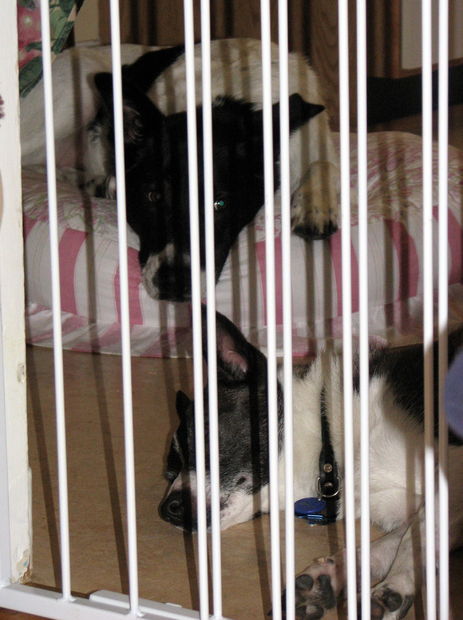
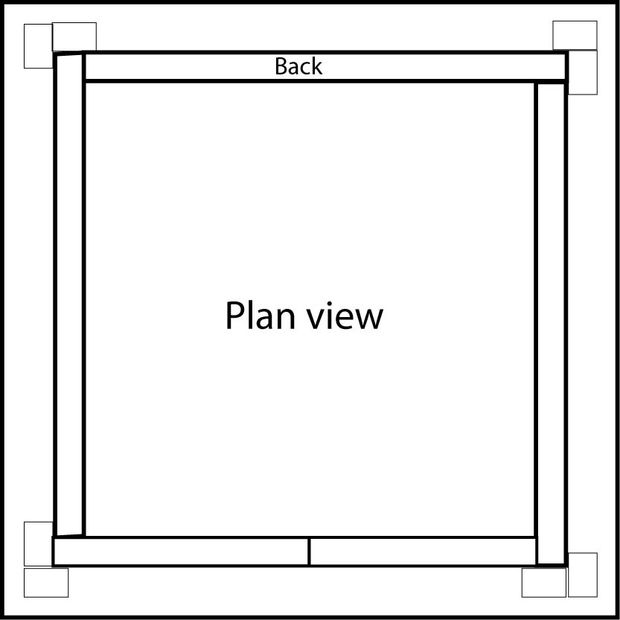
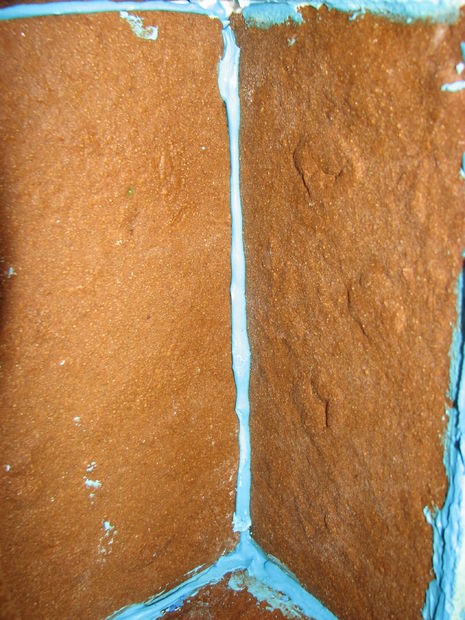



Divide the reserved glue icing into small bowls for different colors, as many as you want for the doctor and his outfit. Remember to leave some white for decorating the Tardis if you haven’t done that yet. Keep any icing you're not using sealed so it doesn't dry out.
Use the gel colors to tint the icing. With gel coloring, a tiny bit goes a long way. Mix to get the colors you want; for example, combine red and green to get brown. Ice the Doctor. For the eleventh Doctor, you’ll need brown for his coat shoes and hair, peach for his skin, red for the fez and his shirt stripes, white for his shirt, a tiny bit of purple for a bow tie, and a smidge of pink for his mouth. You already have blue for his pants. I also iced a little piece of toothpick to make a sonic screwdriver for him to hold. The tip of a toothpick is useful for icing the details on the Doctor, too.
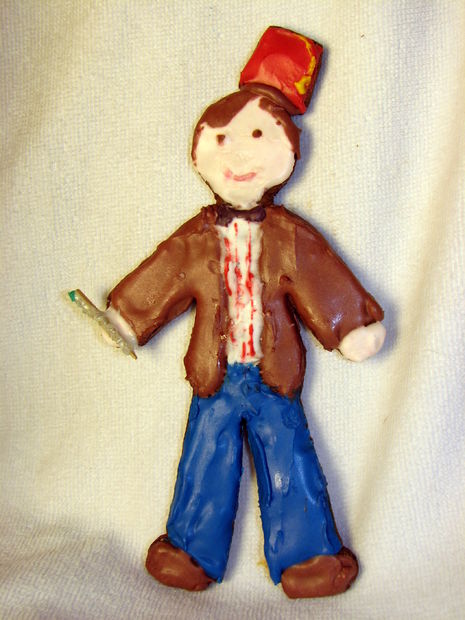
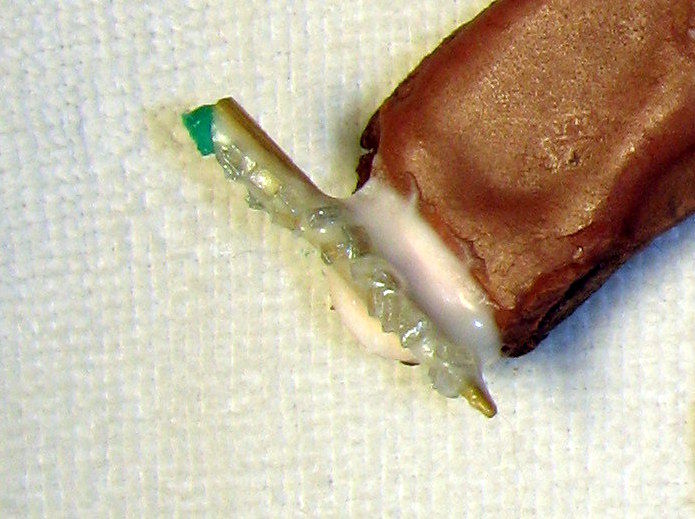


You may choose to leave your Tardis a traditional gingerbread brown. If you want a blue Tardis, however, you will need to frost it because the molasses makes the gingerbread dough itself too dark to dye. This recipe is the kind of frosting you’d get on a supermarket cake, chosen for spreadability, color, and shelf life, so don’t expect it to taste as good as a buttercream. I chose to use frosting instead of the plasticky-smooth rolled fondant that is de rigueur for cakes these days, because the Tardis is wooden and slightly battered.
Blue frosting for outside of Tardis:
1/3 cup vegetable shortening (Crisco)
1/8 teaspoon salt
2 cups powdered sugar (more or less)
2 tablespoons milk (more or less)
Cream the shortening and beat in the salt. Beat in the milk and gradually add the sugar. If the consistency isn’t how you like it for spreading, add more sugar or milk as necessary. Color with gel coloring. This frosting tends to darken slightly on the surface as it dries.
Make sure the Tardis has securely set. To be safe, I let mine dry overnight before I frosted it. Frost the Tardis with a knife. If you are more of a perfectionist than I am, you can smooth it with a scrap of parchment paper as the frosting sets.
Pipe the windows on with white glue icing. I did this freehand, but if you are feeling very precise you can make the windows as squares on parchment paper and stick them onto the Tardis once they dry. Draw the square inset panels onto the Tardis freehand with the dark blue glue icing. Divide the window panes and write on the front sign with the dark blue icing, too. Spread dark blue as the background of the “Police Box” signs. Write “Police Box” on the signs in white. Glue the gumdrop on top.
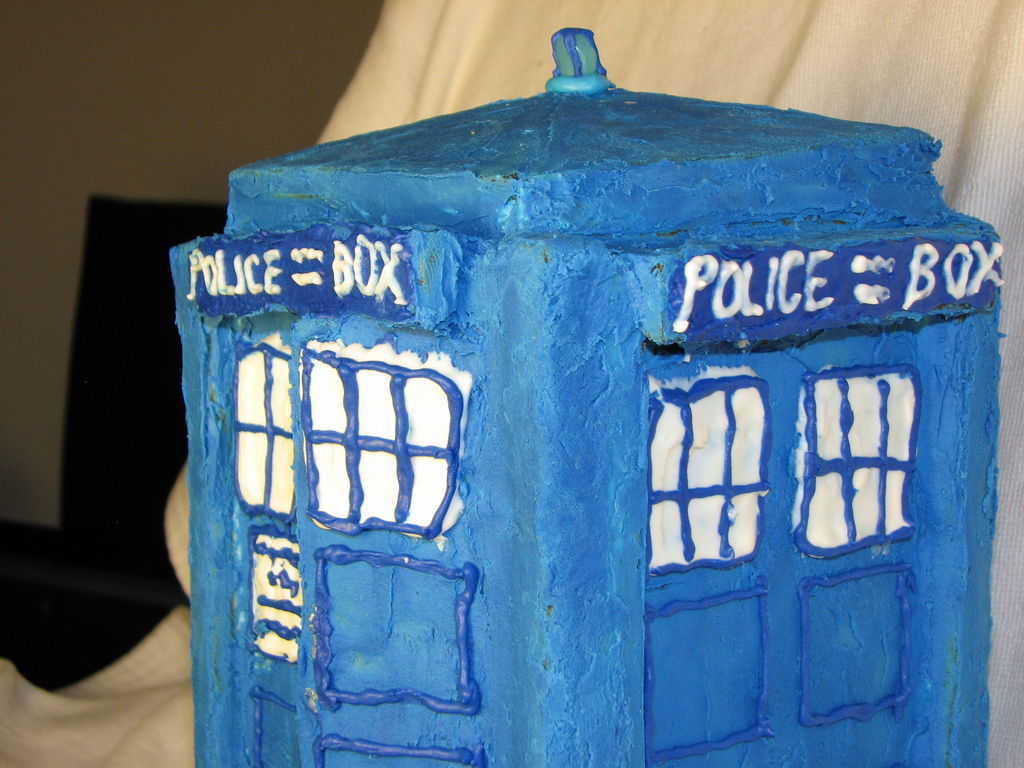
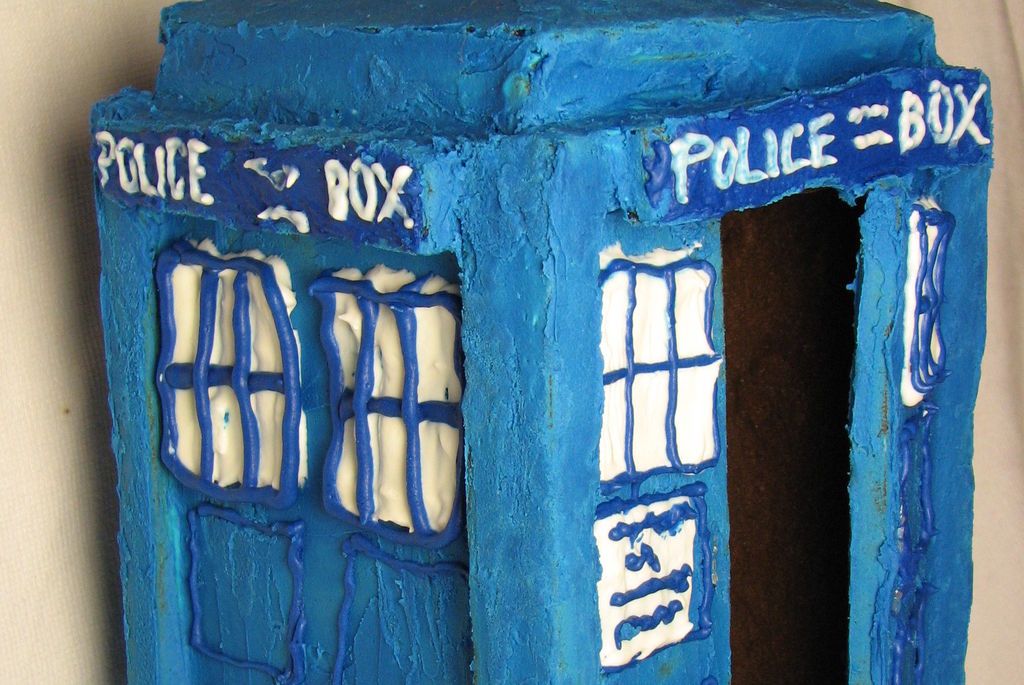
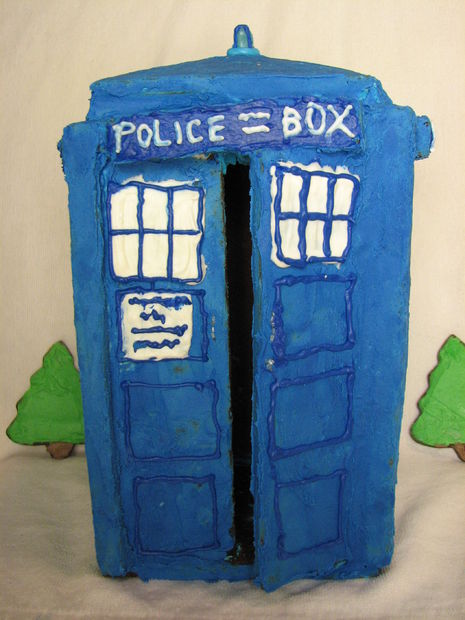



Have fun explaining to your family members what a Tardis is. "No, Gramma, it only looks like a phone booth."
Question & Answer
Question: Choose the best title for the missing blank to correctly complete the recipe.
Make Your Stencils
____________
Decorate Your Doctor
Enjoy!
Choices:
(A) Assemble Your Tardis
(B) How to Make a Shirley Temple
(C) Set Crumb Topping Aside
(D) Gather Ingredients and Utensils
 (A) Assemble Your Tardis
(A) Assemble Your Tardis